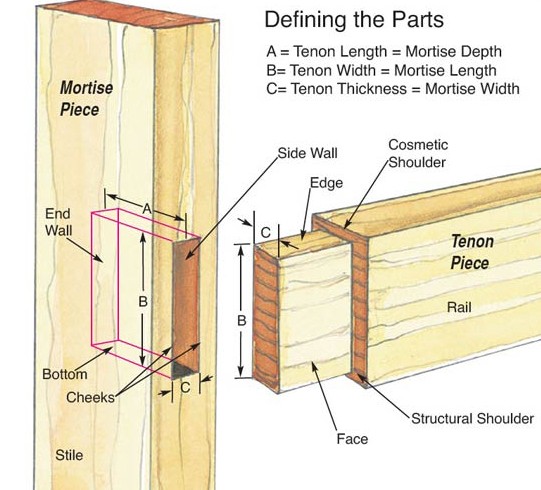
Identifying the anatomy of mortise and tenons.
While it may seem a bit over the top, there are at least nine parts to label when it comes to a run of the mill mortise and tenon. Do you need to know all these terms to make a successful mortise and tenon? The answer is no, but the nomenclature helps you to understand the geometry of the joint and how it can vary from use to use. For lack of a better term, we call this the anatomy of the joint, and some of the names are actually derived from our human anatomy. The specific name of the mortise/tenon piece depends on its use or function and its orientation. Most commonly, the mortise piece is usually an upright piece like a stile, while the tenon piece is usually a horizontal piece, such as a stretcher, rail or apron. This drawing will illustrate the various parts and where they occur.
Tenon Piece: The Rail
Face
Edge
End
Structural Shoulder
Cosmetic Shoulder
Mortise Piece: The Stile
End wall
Side Walls
Bottom
Cheeks





